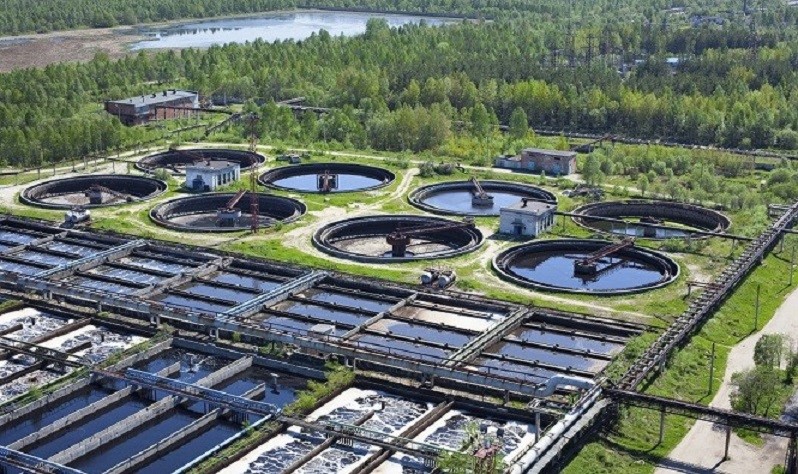
Wastewater specifications
The specifications for wastewater vary in determining the type of treatment plant that should be installed. Therefore, you must familiarize yourself with these characteristics and specifications before making your appropriate choice.
Specifications of the wastewater treatment plant.
What is the definition of wastewater?
The definition of wastewater is the water that comes from residential gatherings, industrial and commercial drainage, precipitation, rainstorms, animal husbandry farms, filtered water to public sewage pipes, etc., and it contains 99% to 99.6% of water, while the rest is suspended and dissolved substances, as follows An approximate general idea of the proportions of these pollutants in wastewater.
30% inorganic materials: salts and ashes.
70% organic materials, 45% protein, 18% starch, and 7% fats and fats.
Black wastewater
Blackwater or black sewage is a mixture of urine and feces with toilet flushing water or anal flushing water if water or dry cleaning agents are used. Black water contains pathogens in the stool and nutrients in the urine that expand in the flush water.
Graywater wastewater
Gray water or gray wastewater is generated from residential buildings or from office buildings from sites that emit non-fecal wastewater, or all flows except wastewater from toilets.
Wastewater specifications
Our understanding of the physical, chemical, and biological characteristics of wastewater is very important in the design and operation as well as in the collection, treatment, and disposal of wastewater after treatment.
Physical Properties
Normally, the wastewater is gray in color and has a putrid, unpalatable smell, and the color gradually turns from gray to black, which indicates anaerobic fermentation. The most important physical indicator of wastewater is the temperature and the concentration of solids in it. Heat affects chemical reactions, vital activity, and solids such as:
Total suspended solids.
solids (TSS)
Volatile suspended solid (S)
And settleable solids that affect the reactions and determine the sizes and dimensions of the treatment plants.
Solids
It includes solids (suspended and dissolved substances) and is divided according to the following:
Total solids
It is a group of solids and dissolved substances. And every part of these
Chemical Constituents
The dissolved and suspended materials contain organic materials, inorganic materials, and gases.
Organic materials contain carbohydrates, fats, oils, grease, protein, pesticides, agricultural chemicals, volatile organic matter, and other toxic substances.
Inorganic materials contain heavy metals, nutrients (such as nitrogen and phosphorous), pH alkalinity, chloride, sulfate, and other inorganic materials.
Gases: Gases such as carbon dioxide, nitrogen, oxygen, hydrogen sulfide (HS), and methane.
Nitrogen The normal range for nitrogen in raw wastewater is 25 mg/L and for total nitrogen (includes ammonia, nitrate, NO, and organic nitrogen). (It is based on an approximate organic nitrogen figure – 35 mg / L)
The organic nitrogen concentration is measured by the Kildal experiment (TKN). That measures the organic nitrogen and ammonia nitrogen and then extracts the ammonia. nitrogen to get organic nitrogen.
Phosphorus The normal range of phosphorus in raw wastewater is 2022 mg/l and includes 10 mg/l organic phosphorus and 1-1 mg/l inorganic phosphorus. ).
BOD, (Biochemical oxygen demand)
The intensity of organic pollution is measured by the amount of oxygen consumed for the oxidation of organic substances by biological fixation, in five days at a temperature of 20C0. Usually, this figure refers to the initial stage of oxidation called carbonic oxidation (CBOD), which is different from the nitrogenous BOD that is used in the second stage.
The BOD is estimated at 100 – 250 mg/L, in the humid northern countries the BOD is estimated at 250 – 400 mg/L. In countries like the Middle East that consume less water, this may raise the pollution load.
The ratio of nutrients carbon, nitrogen, and phosphorus is important in biological treatment and is symbolized by BOD/N/P by weight and must achieve 100/5/1. Generally, the percentage of nutrients in the precipitated wastewater ranges from 100/17/5 to 100/23/7.
Biological Characteristics
Wastewater contains many organic organisms such as bacteria, fungi, protozoa, microscopic animals and plants, and viruses. Usually responsible for the biological treatment of water are bacteria and protozoa.
Indicator bacteria
Although many disease-causing organisms are found in sewage, due to the difficulty in isolating and enumerating all organisms, a total enumeration of coliform TC (total coliform), as well as FC (fecal coliform) and FS (fecal streptococcus), is used.

























